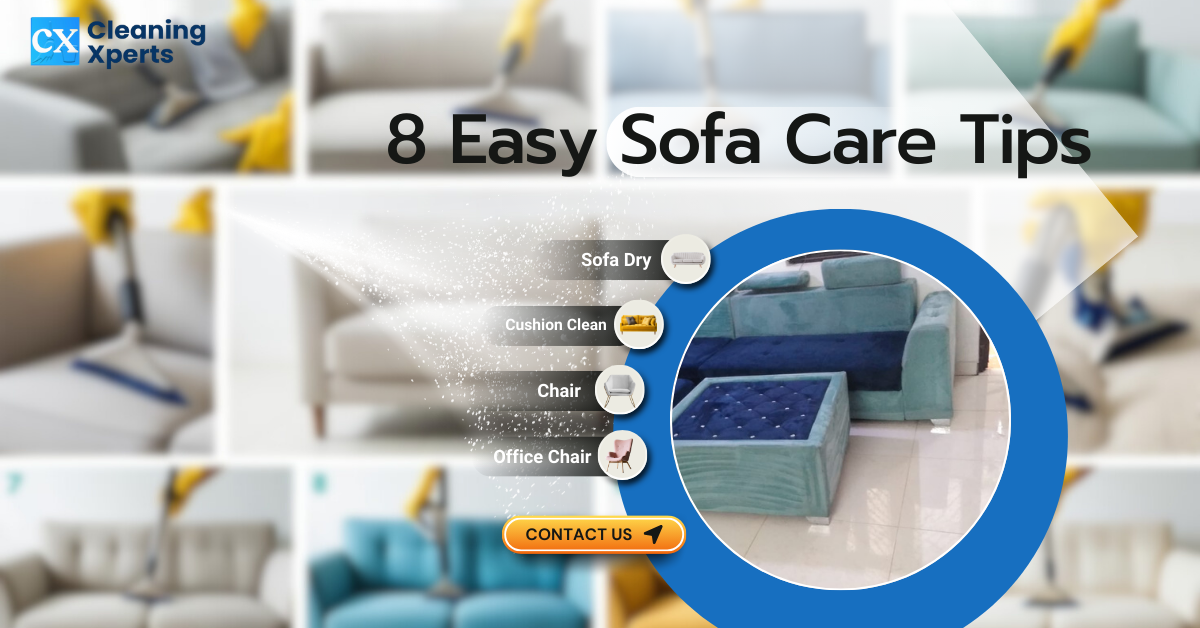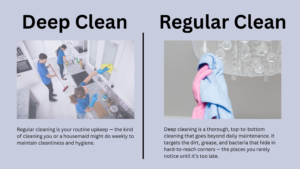Why Mattress Hygiene Matters More Than You Think
Let’s face it—how often do you really consider cleaning your mattress? If mattress cleaning rarely crosses your mind, you’re in good company. But the reality is, mattresses quietly collect dust mites, dead skin cells, sweat, and bacteria over time. You spend nearly one-third of your life on it, so giving it some attention isn’t just a nice-to-have—it’s crucial for your well-being.
Hidden Dangers of a Dirty Mattress: Dust Mites, Bacteria, and Allergens
Each night, your body releases dead skin, sweat, and potentially transfers dirt or allergens from outside. These attract dust mites, which are one of the top triggers for allergies and asthma. Bacteria can also build up, potentially leading to skin irritations or respiratory issues. Gross, right?
Benefits of Cleaning Your Mattress Regularly
By maintaining a clean mattress, you’re not only extending its lifespan but also enhancing the quality of your sleep. A fresh mattress feels better, smells better, and reduces your chances of waking up sneezing or itchy. It’s like giving your bed a reset button.

8 Easy Sofa Care Tips That Actually Work
Point 1: Preparing for the Cleaning Process
Tools and Materials You’ll Need to Clean Your Mattress at Home
- Vacuum cleaner with upholstery attachment
- Baking soda
- White vinegar
- Spray bottle
- Clean clothes and towels
- Mild detergent
- Enzyme cleaner (optional)
- Essential oils (optional)
- A fan or open windows for ventilation
Safety First: Precautions Before Starting
Before you go full cleaning mode, make sure your mattress can handle the products you plan to use. Always test on a small area first. Also, ensure proper ventilation to avoid inhaling fumes or moisture getting trapped
How Often Should You Clean Your Mattress?
Ideally, deep clean your mattress every 3–6 months. If you have allergies, pets, or kids who co-sleep, every 2–3 months is even better.
Point 2: Step-by-Step Deep Cleaning Process
Step 1: Remove Bedding and Wash Thoroughly
Strip everything—sheets, covers, pillows, and duvets. Clean them in hot water to help eliminate bacteria and get rid of dust mites. For extra freshness, consider adding a cup of white vinegar to the wash to help eliminate odors.
Step 2: Give Your Mattress a Thorough Vacuuming to Get Rid of Surface Gunk
Use the vacuum’s upholstery attachment to thoroughly clean the mattress surface, removing dust, dirt, and pet hair. Don’t forget the sides and seams—they love to hide stuff there.
Step 3: Spot Cleaning Stains with Homemade or Store-Bought Solutions
Combine a few drops of dish soap with cold water, or use a vinegar and water mixture for an effective cleaning solution. Blot stains—don’t rub, or you’ll push them deeper. For tougher stains, enzyme cleaners work wonders on biological messes like blood or urine.
Step 4: Use Baking Soda to Neutralise Odours and Absorb Moisture
Sprinkle a good layer of baking soda all over the mattress and let it rest for at least 30 minutes—or longer if time allows—for maximum freshness Then vacuum thoroughly. This step is like dry shampoo for your bed!
Step 5: Optional Steam Cleaning for Deep Sanitization
Steam cleaning helps kill bacteria and dust mites. Use a handheld steam cleaner, but be careful not to soak the mattress. Too much moisture = mold risk.
Step 6: Letting the Mattress Dry Completely Before Use
Point 3: Tackling Common Mattress Stains
How to Remove Sweat Stains from a Mattress
Combine hydrogen peroxide, a few drops of dish soap, and baking soda to make an effective stain-fighting solution. Spray the mixture onto the stained area, wait about 15 minutes, then gently wipe it away with a clean cloth. It breaks down sweat without harsh chemicals.
Effective Ways to Get Rid of Urine Stains and Smells
layer of baking soda to help absorb and eliminate any lingering smells.
Blood Stain Removal Techniques that Actually Work
Cold water is key. Warm or hot water can set the stain, so opt for cold water and carefully blot the stain with salt or hydrogen peroxide for the best outcome.
Tips for Eliminating Mold or Mildew from Your Mattress
Take the mattress outside in sunlight if possible. Combine rubbing alcohol with water to clean the stained areas, and make sure the mattress is thoroughly dry afterward.
Point 4: Natural vs. Chemical Cleaning Solutions
DIY Natural Cleaners: Vinegar, Baking Soda, Lemon Juice
They’re budget-friendly, eco-friendly, and effective. Mix and match for a powerful punch against stains and odors.
Are Chemical Cleaners Safe for Your Mattress? Pros & Cons
Pros? Fast and powerful. Cons? They might damage delicate materials or leave residue. Always read the label and patch test.
When to Use Enzyme Cleaners for Biological Stains
Enzyme cleaners work by breaking down organic substances such as sweat, urine, and vomit. Perfect for families with children or furry friends around.
Point 5: Preventive Maintenance for a Cleaner Mattress
Using Mattress Protectors: A Must-Have Barrier
These zip-on covers keep your mattress safe from spills, dust mites, and bacteria. Wash them monthly for max benefit.
How to Rotate and Flip Your Mattress Properly
Rotate every 3 months. Flip it if it’s double-sided. This prevents sagging and extends lifespan.
Best Practices for Reducing Moisture and Humidity in the Bedroom
Use a dehumidifier. Avoid eating or drinking in bed. And always allow proper airflow under and around the bed.
Keeping Pets Off the Bed: Is It Time to Set Boundaries?
Our pets are adorable, but they can also track in dirt, shed dander, and carry fleas. Placing a pet bed close by offers a great middle ground.
Point 6: Special Considerations for Different Mattress Types
Cleaning Memory Foam Mattresses without Damaging Them
Avoid soaking. Spot clean only. Use mild solutions and minimal moisture.
Best Practices for Spring and Hybrid Mattresses
These are more breathable but still benefit from vacuuming, deodorizing, and spot cleaning.
Are Latex Mattresses Easier to Clean? Pros and Cons
Yes latex is antimicrobial. However, steer clear of strong chemicals and prolonged sun exposure to preserve its condition.
Point 7: When to Call the Pros or Consider Replacing Your Mattress
When DIY Isn’t Enough: Calling in the Pros
If the smell won’t go away or stains keep reappearing, it’s time to let professionals handle it.
How to Tell When It’s Time to Replace Your Mattress Sagging, discomfort, allergies, and creaky noises are all red flags. Most mattresses last 7–10 years.
Point 8: Mattress Cleaning Myths Debunked
Do You Really Need to Air Out a Mattress in the Sun?
Sunlight can kill bacteria and mites, but it’s not always necessary—especially in colder climates.
Is Vacuuming Alone Enough?
Nope. It’s a good start, but stains and odors need deeper cleaning.
Myth vs. Fact: How Often You Should Clean
You don’t need to clean weekly—but 3–4 times a year is the sweet spot for most people.
Point 9: Bonus Tips and Tricks
Using Essential Oils for a Fresh-Smelling Mattress
Lavender, eucalyptus, or tea tree oil mixed with baking soda adds a spa-like scent and extra freshness.
Creating a Monthly Cleaning Schedule
Schedule regular reminders to vacuum your mattress and take care of spots as they appear. Make it part of your routine, not a task you dread.
Mattress Cleaning Hacks Shared by Experts
Use a squeegee to lift pet hair Place a sock filled with baking soda in the freezer overnight, then slip it under the sheets to freshen them up Use cornstarch to absorb oily stains before blotting
Conclusion
Keeping your mattress clean isn’t just about hygiene—it’s about investing in better sleep, better health, and a better quality of life. With the right tools, a little know-how, and a sprinkle of baking soda magic, your mattress can feel brand new again. Don’t wait until the next spill or sneeze attack. Start your mattress care routine today and sleep peacefully knowing you’ve created a cleaner, safer sleep space.



